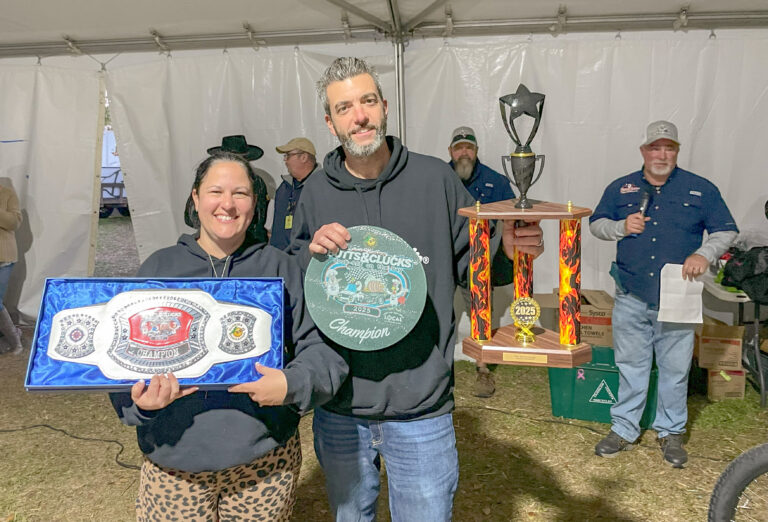LaFleur: LeBron, lefties, and ambidexterity
One of the most powerful and dextrous athletes of the 21st century, and some say the greatest basketball player in the history of the game, LeBron James recently surpassed Kareem Abdul-Jabbar’s record to become the NBA’s all-time highest scorer. In the L.A. Lakers’ Feb. 7 game against the Oklahoma City Thunder, LeBron, formerly with our own Miami Heat, scored 38 points for a career total of 38,390.

LeBron sank the record-breaking 15-foot fadeaway jumper, as he does nearly all his shots, with his right hand, though in pretty much all else he’s a lefty. Approximately 90% of humans are right-handed, and the other 10% are lefties or, like LeBron, have some degree of ambidexterity; about 20% more men than women are lefties. According to a recent study published by the American Psychological Association, only about 1% of us are purely ambidextrous, with neither hand dominant.
My wife Alice’s paternal grandfather, Dr. Paul Light Tipton of Senath, Missouri, was known for his ability to perform surgeries with either his left or right hand, so he never needed to move from one side of the operating table to the other. And Alice’s son Tip, though right-handed, was consistently left-footed on the field in his soccer-playing days, a trait seen in only about 5% of the population. “Sidedness” is uniformly right or left for the vast majority of us, not just for hands and feet, but for eyes and ears as well – all this functionality governed by the hemispheres of our brains.
Studies of prehistoric cave-paintings show that right-handedness has dominated for tens of thousands of years, so there have been lefties about as long as man has existed. But the fact that they have always constituted a small minority, and a quite visible one, has led to suspicion and discrimination. Sadly, when it comes to any sort of “otherness”/ALTERity (from Latin alter/“the other,” as in ALTER ego and ALTERnate), whether of skin color, religion, sexual orientation or, increasingly these days, even political persuasion, we too often fall short of meriting our species name Homo sapiens, “wise human.”

Our English word “right,” the opposite of “left,” evolved from an originally different word that had meant “proper, fair, morally corRECT,” like RIGHTeous. Modern English “left,” on the other hand (wink!), derives from an Old English word dating to A.D. 1200 meaning “weak, foolish, worthless.”
“Having two left feet” was an expression for clumsiness as early as 1900. A “left-handed compliment” is unflattering. Being “out in left field,” meaning out of touch with reality, evolved from baseball lingo in the 1940s. Though originating in a charitable biblical exhortation (Matthew 6.3), the notion of the left hand not knowing what the right is doing has ended up referring to uncoordinated actions.
Use of the term for democrats or liberals also had negative connotations originating in 18th-century French politics. Lefties of my generation, including my college buddy Al, often had their offending left hands smacked with rulers by teachers determined to point them in the, er, right diRECTion. Lefties in the U.S.S.R. were compelled to use their right hands for writing.

Even the ancients disparaged leftness and held it suspect. Lightning strikes, loud noises, or the flights of birds to the left were reckoned ill omens. The Romans’ word for (directional) “right” was dexter, as in DEXTERity and DEXTRous, both positive terms; even in antiquity the adjective had taken on the metaphorical senses of “favorable” and “skilful” or “handy.”
Classical Latin had three words for “left,” laevus and scaevus, both of which had come also to mean “inauspicious, harmful,” and sinister, whose negative associations are evident in the modern sense of that word that goes all the way through Old English and French back to the Romans. You might name a son “Dexter,” but never “Sinister.” Nor would you wish your daughter to be gauche, French for both left-handed and socially awkward.
Our word AMBIDEXTRous, meaning “able to use both hands equally well,” like LeBron, also reveals the bias against leftness. From Medieval Latin ambidexter, the term means literally “having right hands on both (ambi-) sides”; its rare opposite, AMBILEVous (from laevus), lit. “having two left hands,” refers to clumsiness. Among cats, dogs, and horses, more females are right-handed, more males left-handed, but some animals, like wallabies and gray short-tailed opossums, are ambidextrous.

If you’re a southpaw yourself (meaning you throw a baseball, or a punch, with your left hand) and feeling a bit depressed after reading all this far, take heart! Some of the world’s most talented and accomplished folks throughout history have been left-handed, including Leonardo Da Vinci and Michelangelo (both maybe ambi), Queens Victoria and Elizabeth II (and her queen mother), Marie Curie, Albert Einstein, Babe Ruth, Paul McCartney, and Oprah. Studies have shown that left-handed athletes surpass righties in many sports, left-handed musicians in certain musical tasks. Our lefty presidents were Garfield, Hoover, Truman, Ford, Reagan, Bush (the elder), Clinton, and Obama, and Jefferson was an ambi—that’s about twice the rate of leftiness in the general population.
Bias against lefthandedness has diminished in recent generations, awareness of the multiple challenges lefties face has increased, and accommodations – like left-handed school desks, can openers, and golf clubs! – are becoming more common. You’ll find plenty of left-hand stores online, not to mention the “Leftorium” shop run by Homer and Marge’s neighbor Ned Flanders, one of several lefty characters on “The Simpsons,” the animated TV show created by lefthander Matt Groening.

And SINISTRality is celebrated annually each August 13 on International Lefthanders Day, first observed on a Friday the 13th in 1976. For this year’s event, if you’re a two-fisted beer drinker, you might try your hand at “ambilevity” and lift a mug in both your lefts!
Rick LaFleur is retired from 40 years of teaching Latin and Classics at the University of Georgia; his latest books are “The Secret Lives of Words,” a collection of his widely distributed newspaper columns, and “Ubi Fera Sunt,” a lively translation into classical Latin of Maurice Sendak’s children’s classic, Where the Wild Things Are. He and wife Alice live part of the year in Apalachicola, under the careful watch of their French bulldog Ipsa.







Another great read and continuing learning experience. Enjoyed!!